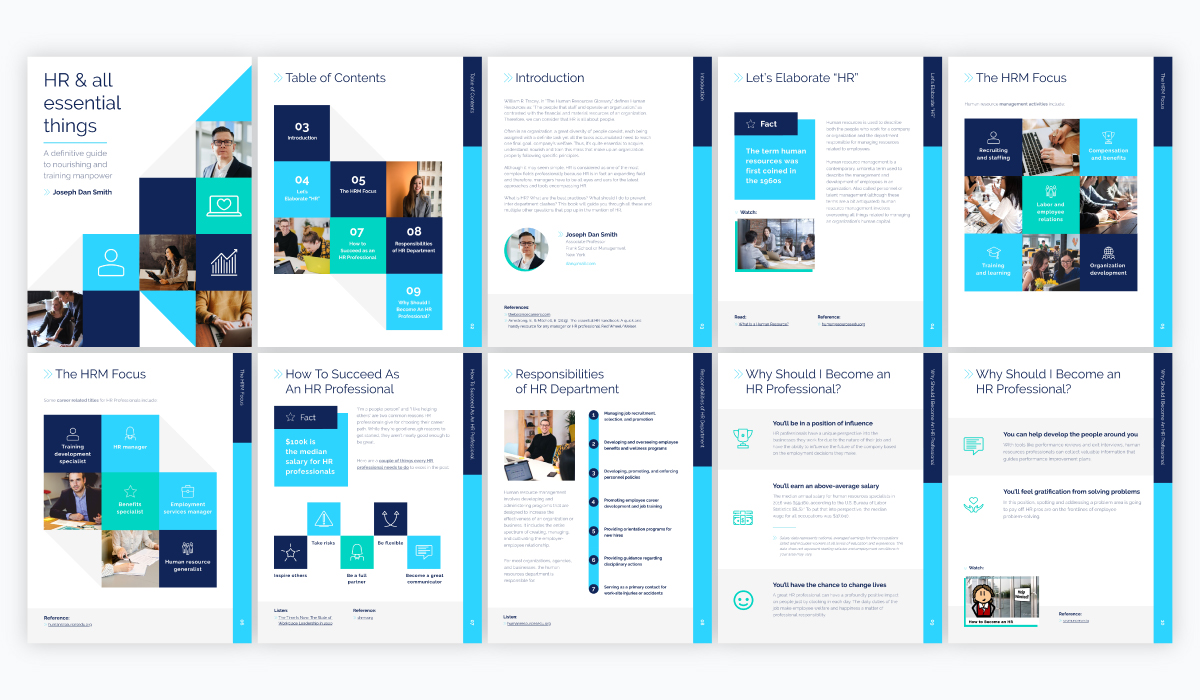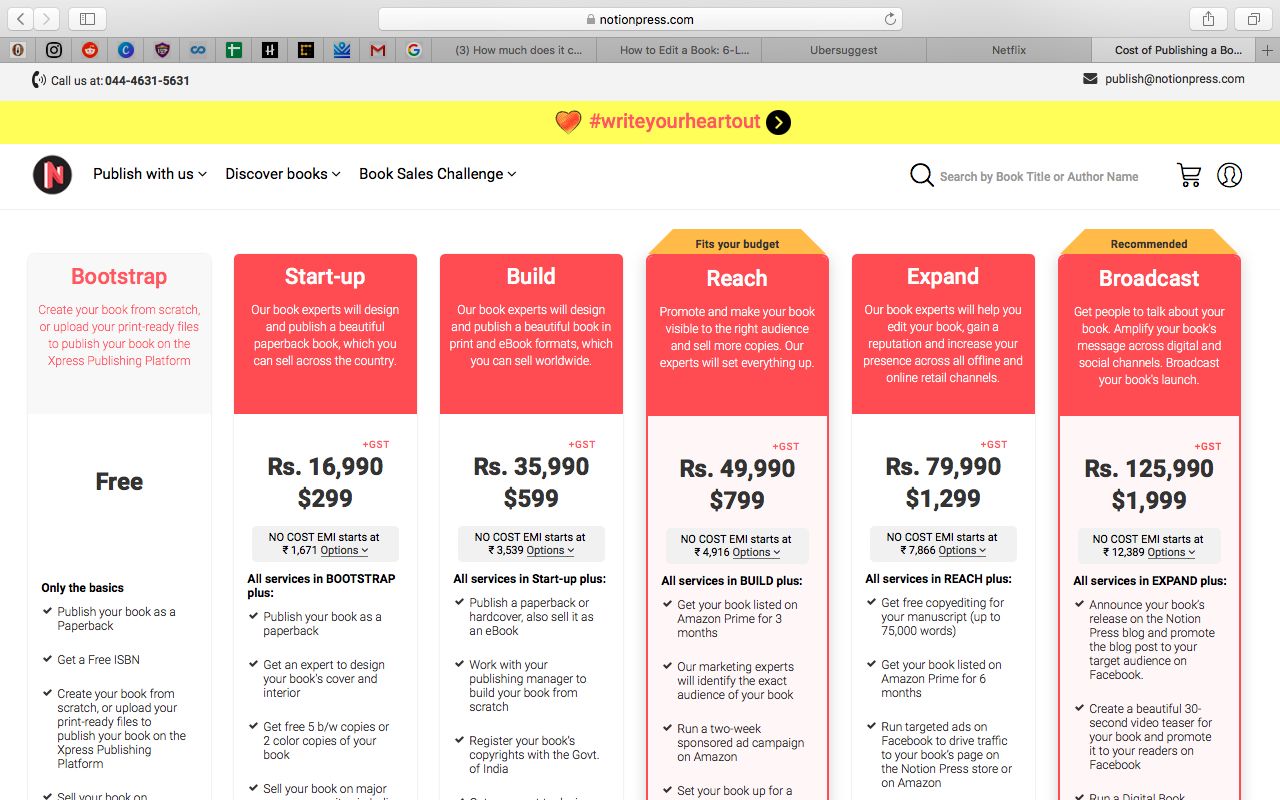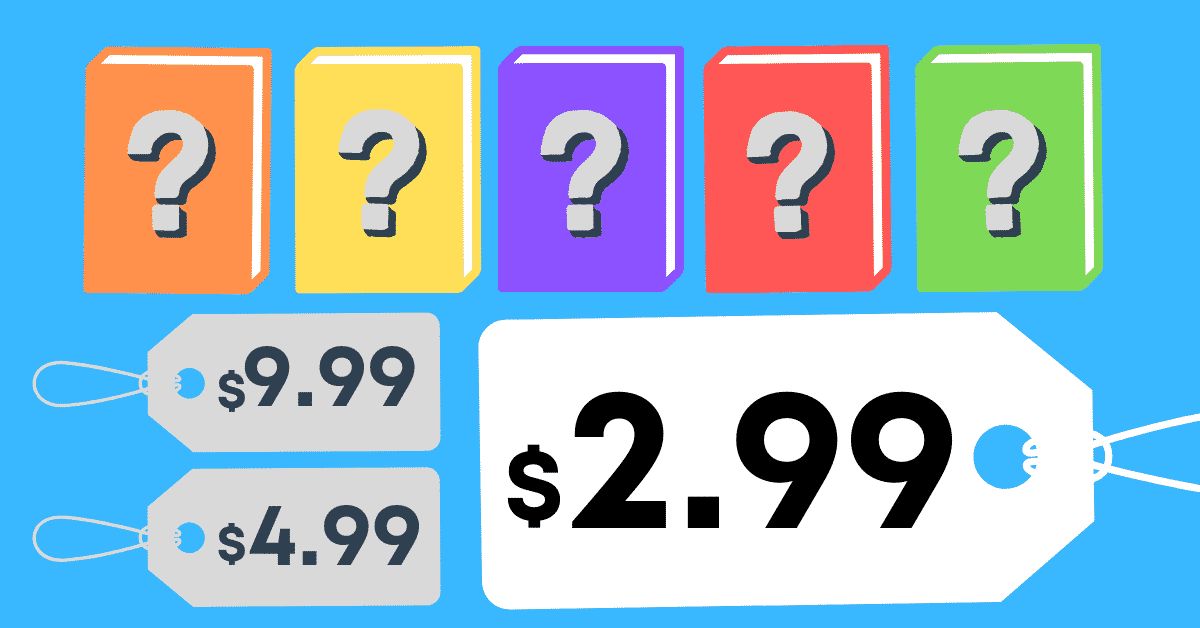Introduction
With the rise of digital technology, self-publishing has become a popular and accessible option for aspiring authors to bring their work to the masses. Gone are the days of relying solely on traditional publishing houses to get your book on the shelves. Now, anyone with a creative spirit and the determination to see their words in print can become a published author.
Self-publishing an eBook offers numerous advantages over the traditional publishing route. Not only do you have complete creative control over your work, but you also have the potential to earn higher royalties and reach a global audience. Whether you have a novel, a non-fiction book, or a collection of short stories, self-publishing an eBook allows you to share your unique vision with readers around the world.
In this comprehensive guide, we will walk you through the step-by-step process of self-publishing your eBook. From writing and editing to designing and marketing, we will cover everything you need to know to turn your manuscript into a successful eBook.
While self-publishing may seem like a daunting task, with the right tools and guidance, it can be a rewarding and fulfilling journey. So, if you have a story to tell or knowledge to share, sit back, relax, and let’s dive into the world of self-publishing an eBook!
Step 1: Writing Your eBook
Writing your eBook is the first and most crucial step in the self-publishing process. It’s where your creativity and ideas come to life on the pages. Here are some tips to help you get started:
- Choose a compelling topic: Select a subject that you are passionate about or have extensive knowledge in. This will ensure that you stay engaged throughout the writing process and that your expertise shines through in your eBook.
- Create an outline: Before you start writing, outline the structure of your eBook. This will help you stay organized and provide a clear roadmap for your content.
- Set writing goals: Establish a writing routine and set goals for yourself. Whether it’s a word count per day or a specific number of chapters per week, having a plan will keep you motivated and accountable.
- Write the first draft: Don’t worry about perfection in the initial draft. Just focus on getting your ideas down on paper. Remember, you can always revise and refine later.
- Edit and revise: Once the first draft is complete, go through the editing process. Look for grammar and spelling errors, ensure consistency in tone and style, and refine your content to make it engaging and cohesive.
- Solicit feedback: Share your manuscript with trusted friends, family, or beta readers for their input. Constructive feedback can help you identify areas for improvement and gain a fresh perspective.
- Proofread: After incorporating feedback and making necessary revisions, proofread your eBook meticulously. Check for any remaining typos or errors and ensure that your content flows smoothly.
- Consider professional editing: If you have the budget, hiring a professional editor can elevate the quality of your eBook. They can provide comprehensive editing services, including structural and content editing, to make your eBook shine.
Remember, writing an eBook requires time, effort, and dedication. Stay focused, embrace the creative process, and don’t be afraid to make revisions along the way. Once you have a polished manuscript, you’ll be ready to move on to the next step: editing and proofreading.
Step 2: Editing and Proofreading
Editing and proofreading are essential steps in the self-publishing journey. They ensure that your eBook is polished, error-free, and ready to be presented to readers. Here are some key tips to help you effectively edit and proofread your eBook:
- Take a break before editing: After completing the first draft, set it aside for a few days or weeks. This break will give you a fresh perspective when you start the editing process.
- Read your eBook out loud: Reading your work aloud can help you identify awkward sentences, grammatical errors, and inconsistencies in tone. It also helps you ensure that your writing flows smoothly.
- Focus on structure and flow: Ensure that your eBook follows a logical structure and has a cohesive flow. Check if each chapter and section connects seamlessly and if the overall progression of ideas makes sense.
- Check for grammar and spelling: Use grammar checkers and proofreading tools to catch any grammar and spelling errors. However, be cautious and verify recommendations made by these tools, as they may not always be accurate.
- Review punctuation and formatting: Pay attention to punctuation marks, such as commas, periods, and quotation marks. Also, check for consistent formatting, such as headings, bullets, and numbered lists.
- Ensure clarity and readability: Make sure your writing is clear and easily understandable. Avoid excessive jargon or complex language that may confuse readers.
- Consider hiring a professional editor: If you have the resources, hiring a professional editor can significantly enhance the quality of your eBook. They can provide an objective assessment, offer valuable suggestions, and catch any errors that you might have missed.
- Proofread multiple times: Proofreading is an iterative process. Go through your eBook multiple times to catch any remaining mistakes or inconsistencies. It’s crucial to be thorough.
Effective editing and proofreading will ensure that your eBook meets high-quality standards. It will improve the reading experience for your audience and help establish your credibility as an author. Once your eBook is meticulously edited and proofread, you’ll be ready to move on to the next step: formatting and designing your eBook.
Step 3: Formatting and Designing Your eBook
Formatting and designing your eBook is a crucial step in presenting your content professionally and creating an enjoyable reading experience for your audience. Here are some essential tips to help you with the formatting and design process:
- Choose the right file format: Select the appropriate file format for your eBook, such as EPUB, MOBI, or PDF. Consider the compatibility of the format with various e-readers and devices.
- Pay attention to font and typography: Use legible fonts that are easy on the eyes. Consider factors like font size, line spacing, and paragraph indentation to enhance readability.
- Add headers and footers: Include consistent headers and footers throughout your eBook, including the title, chapter names, and page numbers. This helps readers navigate your eBook easily.
- Use appropriate formatting styles: Use appropriate formatting styles, such as italics or bold, to emphasize important points. Be consistent with your formatting choices throughout the eBook.
- Include visuals and images: If relevant to your content, add visuals and images to enhance the reader’s engagement. Ensure they are properly formatted and high-quality.
- Create a table of contents: Organize your eBook with a table of contents that links to each chapter or section. This feature allows readers to navigate directly to specific parts of your eBook.
- Add hyperlinks: If your eBook references external sources or websites, add hyperlinks to provide easy access to the referenced material.
- Test your eBook on different devices: Before publishing, test your formatted eBook on various devices and e-readers to ensure compatibility and proper rendering of your content.
- Consider using professional eBook formatting software: If you’re unfamiliar with eBook formatting, consider using dedicated eBook formatting software that can streamline the process and ensure your eBook looks professional.
Remember, a well-formatted and visually appealing eBook enhances the overall reading experience for your audience. Take the time to carefully format and design your eBook to make it visually appealing, reader-friendly, and engaging. Once your eBook is properly formatted and designed, you’ll be ready to move on to the next step: creating a captivating cover for your eBook.
Step 4: Creating a Cover
Creating an eye-catching and professionally designed cover is crucial for attracting potential readers and making a positive first impression. Here are some essential tips to help you create an engaging cover for your eBook:
- Understand your genre: Research and understand the design trends and expectations in your genre. This will help you create a cover that aligns with reader expectations.
- Use high-quality images: Choose high-resolution images that are relevant to your eBook’s content and visually appealing. Ensure that the images are royalty-free or properly licensed for commercial use.
- Focus on visual hierarchy: Prioritize the essential elements on your cover, such as the title and author name, to ensure they are prominent and easily readable. Use font styles, sizes, and colors that align with your eBook’s theme.
- Create a compelling headline: Craft a catchy and intriguing headline or tagline that encapsulates the essence of your eBook and captures readers’ attention.
- Experiment with color schemes: Choose a color palette that complements your eBook’s theme and creates a visually appealing cover. Consider the emotions and associations that different colors evoke.
- Seek professional help if needed: If you’re not confident in your design skills, consider hiring a professional designer or using online design platforms that offer pre-made cover templates.
- Keep it simple: Avoid cluttering your cover with too many elements. A clean and minimalistic design often attracts more attention and appears more professional.
- Get feedback: Share your cover design with a group of trusted individuals, including potential readers or fellow authors, to gather feedback and make necessary adjustments.
- Make it scalable: Ensure that your cover design is scalable and looks appealing in different sizes, whether it’s a thumbnail or a full-sized image.
Remember, your eBook cover is the first thing readers will see, so invest time and effort into creating a captivating design. A visually appealing cover can significantly increase the chances of attracting potential readers and generating interest in your eBook. Once your cover design is complete, you can move on to the next step: choosing a publishing platform for your eBook.
Step 5: Choosing a Publishing Platform
Choosing the right publishing platform is crucial for successfully self-publishing your eBook and reaching your target audience. Here are some key considerations to help you select the best publishing platform:
- Research different platforms: Explore the various self-publishing platforms available, such as Amazon Kindle Direct Publishing, Smashwords, or Apple Books. Consider their features, royalty rates, distribution channels, and user-friendliness.
- Consider your eBook’s target audience: Identify your eBook’s target audience and determine which platforms they are more likely to use. For instance, if your target readers are primarily Amazon Kindle users, publishing on Amazon would be a logical choice.
- Evaluate royalty rates and pricing: Compare the royalty rates offered by different platforms and consider their pricing options. Some platforms may allow you to set your own price, while others have specific pricing guidelines.
- Assess distribution channels: Determine whether the publishing platform distributes your eBook to multiple online retailers and libraries. This can increase your eBook’s visibility and potential reach.
- Consider exclusive vs. non-exclusive publishing: Some platforms, like Amazon Kindle Select, offer exclusive publishing options. Evaluate the benefits and drawbacks of exclusive publishing, such as access to promotional tools and potential restrictions on distributing your eBook elsewhere.
- Review the platform’s terms and conditions: Take the time to read and understand the terms and conditions of each platform. Pay attention to their rights management policies, payment terms, and any exclusive agreements you may be entering into.
- Check platform support and resources: Consider the level of support and resources offered by the platform, such as customer service, author forums, and marketing tools. These can be valuable assets in promoting and selling your eBook.
- Seek recommendations and reviews: Look for recommendations and read reviews from other authors who have used the platforms you are considering. Their insights and experiences can help you make an informed decision.
- Keep future plans in mind: Consider your long-term publishing goals and the potential for expanding your eBook to other formats or platforms. Choose a publishing platform that aligns with your future plans.
Remember, your choice of publishing platform can significantly impact your eBook’s exposure and success. Take the time to research and weigh your options before making a decision. Once you’ve chosen the most suitable platform for your eBook, you’ll be ready for the next step: uploading your eBook onto the platform.
Step 6: Uploading Your eBook
Uploading your eBook onto the chosen publishing platform is an exciting step towards making your work available to readers worldwide. Here are some essential steps to effectively upload your eBook:
- Prepare your eBook file: Ensure that your eBook is in the correct file format, such as EPUB or MOBI, as per the requirements of the publishing platform. Review formatting, images, and other elements to make sure they appear as desired.
- Create a professional author bio: Write a compelling author bio that provides readers with insight into your background and writing journey. This helps establish your credibility and connect with your audience.
- Write an engaging book description: Craft a captivating book description that highlights the unique selling points of your eBook. Grab readers’ attention and entice them to explore your book further.
- Choose relevant categories and keywords: Select appropriate categories and choose relevant keywords that accurately represent your eBook’s genre and content. This helps readers find your eBook when browsing or searching on the publishing platform.
- Set the right price: Determine the price for your eBook based on factors such as market demand, competition, and perceived value. Consider pricing strategies, such as promotional discounts or periodic price adjustments, to increase visibility and sales.
- Upload your eBook file and cover: Follow the platform’s guidelines to upload your formatted eBook file and cover image. Ensure accuracy and double-check for any errors or compatibility issues.
- Fill in the required metadata: Complete all necessary metadata fields, including the title, author name, publication date, series (if applicable), and any additional information requested by the publishing platform.
- Review and confirm your settings: Take the time to review all the entered information, including pricing, availability, and publishing rights. Make any necessary adjustments before confirming the upload.
- Preview your eBook: Use the platform’s preview tools to validate that your eBook appears as intended on different devices. Check for formatting issues, readability, and any other potential problems.
- Submit your eBook for publishing: Once you are satisfied with the preview and all the details, submit your eBook for publishing. Depending on the platform, it may take some time for your eBook to be available for sale.
Congratulations! You have successfully uploaded your eBook onto the publishing platform. Now, it’s time to move on to the next step: pricing and royalties.
Step 7: Pricing and Royalties
Pricing your eBook appropriately and understanding the royalty structure are crucial steps in maximizing your earnings as a self-published author. Here’s what you need to know about pricing and royalties:
- Consider market demand: Research the market and analyze the pricing of similar eBooks in your genre. Set a competitive price that aligns with reader expectations and the perceived value of your eBook.
- Experiment with pricing strategies: Explore different pricing strategies, such as promotional discounts or bundle offers, to attract more readers and boost sales. Monitor the impact of these strategies and adjust as necessary.
- Understand the royalty structure: Each publishing platform has its own royalty structure. Familiarize yourself with the percentage of royalties you will receive based on the price of your eBook and the platform’s specific terms and conditions.
- Be mindful of pricing restrictions: Some platforms have pricing restrictions based on the price bracket you choose. Ensure that your desired price falls within the allowable range to avoid any issues during the publishing process.
- Consider different royalty models: Some platforms offer different royalty models, such as 35% or 70%, depending on certain factors. Evaluate the benefits and requirements of each model to determine the best fit for your eBook.
- Track your sales and royalties: Use the reporting tools provided by the platform to monitor your sales and earnings. Regularly review the data to gain insights into your eBook’s performance and make informed decisions.
- Revisit pricing periodically: Regularly assess the performance of your eBook and adjust pricing accordingly. Factors such as reader feedback, competition, and market trends can influence the optimal price for your eBook.
- Monitor changes in royalty rates: Stay updated on any changes in the publishing platform’s royalty rates or policies. This will help you stay informed about potential adjustments that may impact your earnings.
- Consider multi-platform publishing: Explore the option of publishing your eBook on multiple platforms. This can widen your distribution reach and potentially increase your overall royalty earnings.
By carefully considering pricing strategies and understanding the royalty structure of your selected publishing platform, you can optimize your eBook’s profitability. Take advantage of the tools and resources provided by the platform to make informed decisions about pricing and effectively track your royalties. With pricing and royalties sorted, you can now focus on the next crucial step: marketing your eBook.
Step 8: Marketing Your eBook
Marketing plays a vital role in gaining visibility and attracting readers to your eBook. To effectively market your eBook, consider the following strategies:
- Create a compelling author website: Build a professional website that showcases your eBook, provides information about you as an author, and offers a platform for readers to engage with your work.
- Optimize your eBook description: Craft a compelling and keyword-rich book description that captivates potential readers. Highlight the unique selling points of your eBook and clearly communicate its value.
- Utilize social media platforms: Establish a presence on social media platforms that align with your target audience. Engage with readers, share engaging content, and promote your eBook to build a loyal fanbase.
- Offer promotional discounts: Generate interest and boost sales by periodically offering discounted prices or running limited-time promotions. Leverage platforms that specialize in eBook promotions to reach a wider audience.
- Request reviews and testimonials: Reach out to book bloggers, reviewers, and influential readers in your genre to request honest reviews of your eBook. Positive reviews can significantly impact your eBook’s credibility and visibility.
- Collaborate with other authors: Seek opportunities for collaborations with other authors in your genre. This can include cross-promotions, joint giveaways, or participating in anthologies to expand your reach and gain exposure.
- Produce engaging content: Create valuable content related to your eBook’s topic or genre. Write blog posts, create videos, or host podcasts to establish yourself as an authority and attract readers who are interested in your subject matter.
- Engage with your audience: Interact with your readers on social media, respond to comments and reviews, and cultivate a sense of community. Engaging with your audience builds rapport and encourages word-of-mouth recommendations.
- Consider paid advertising: Explore paid advertising options, such as targeted social media or search engine ads. Be strategic with your budget, setting clear goals and monitoring the effectiveness of your campaigns.
- Participate in book events and promotions: Take advantage of book fairs, virtual book tours, and online book promotions to expand your audience and gain exposure within the literary community.
Marketing requires consistent effort and creativity. Experiment with different strategies, track your results, and adjust your approach as needed. Stay proactive and continue to promote your eBook even after the initial launch, as ongoing marketing efforts can lead to sustained success. With effective marketing in place, you’re now ready to connect with readers and share your eBook with the world!
Conclusion
Congratulations on reaching the conclusion of this comprehensive guide to self-publishing your eBook! By following the step-by-step process outlined in this guide, you have gained valuable insights into the key aspects of self-publishing, from writing and editing to formatting, designing, and marketing your eBook.
Self-publishing offers an incredible opportunity for authors to share their stories, knowledge, and creativity with a global audience. With digital platforms and tools at your disposal, you no longer have to rely solely on traditional publishing houses to bring your work to the world.
Throughout this guide, you have learned the importance of choosing a compelling topic, diligently editing and proofreading your eBook, designing an engaging cover, selecting the right publishing platform, and effectively marketing your eBook. Each step is essential in ensuring your eBook’s success and reaching your target readers.
Remember, self-publishing is a journey that requires patience, perseverance, and continuous learning. Embrace the challenges along the way, seek feedback from your readers, and always strive to improve your craft as an author.
Now that you have the knowledge and tools to self-publish your eBook, it’s time to take action. Put your plan into motion, trust in your abilities, and believe in the value of your eBook. With dedication and determination, you can make your mark in the publishing world.
So, what are you waiting for? Start writing, editing, formatting, designing, marketing, and sharing your eBook with the world. Best of luck on your self-publishing journey, and may your eBook shine bright among readers!

























